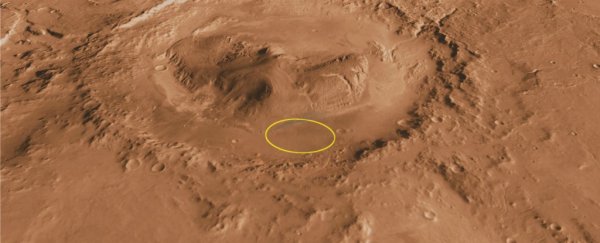Scientists at NASA's Johnson Space Centre found something very unexpected in a Martian crater. Using the Curiosity Rover, the scientists detected a mineral called tridymite that, until now, they thought could only be created in extremely hot temperatures.
The discovery of this tridymite might rewrite the history of the planet, suggesting that it might once have been hotter than we previously thought, and home to monstrous volcanoes.
The scientists found the tridymite with a special instrument on the rover that shoots X-rays at materials to identify the crystal structure of minerals.
"It was the last mineral we expected to see," said Richard Morris, NASA planetary scientist and lead author of this study. "If this stands [the] test of time it has a lot of implications for how Mars evolved. We may have to rethink a few things."
On Earth, tridymite is formed at extremely high temperatures in an explosive process called silicic volcanism. Mount St Helens, known for having the deadliest volcanic event in American history, is an example of a silicic volcano.
These volcanoes form as a result of plate tectonics: Plates shifting in Earth's outer shell dive deep into the Earth's mantle, carrying water with them. They melt and form a mixture of molten rock, or magma, which forces its way to the surface, where it explodes and flows out. The combination of high silica content and extremely high temperatures in these volcanoes creates tridymite.
But as far as we know, Mars doesn't have water, or dynamic plates hidden beneath the surface, and its average temperature is pretty frigid. So where did this tridymite come from?
That's what scientists need to figure out now. And to do this, they'll either need to change their understanding of how Mars evolved, or change their understanding of how tridymite forms.
"We searched long and hard for terrestrial evidence that tridymite might form at low temperatures and not imply silicic volcanism," said Morris. "We couldn't find any. This paper will cause a lot of researchers, including ourselves here at the Johnson Space Centre, to look for ways it could form at lower temperatures."
The next step, Morris said, is for scientists to run experiments and reexamine terrestrial systems in more detail to look for evidence of tridymite. Either way, what they find will shake up our understanding of the Red Planet.
"Mars is a different place," Morris said. "Processes are different there. There may be something weird going on that we just don't recognise yet."
This article was originally published on Business Insider.
More from Business Insider:
